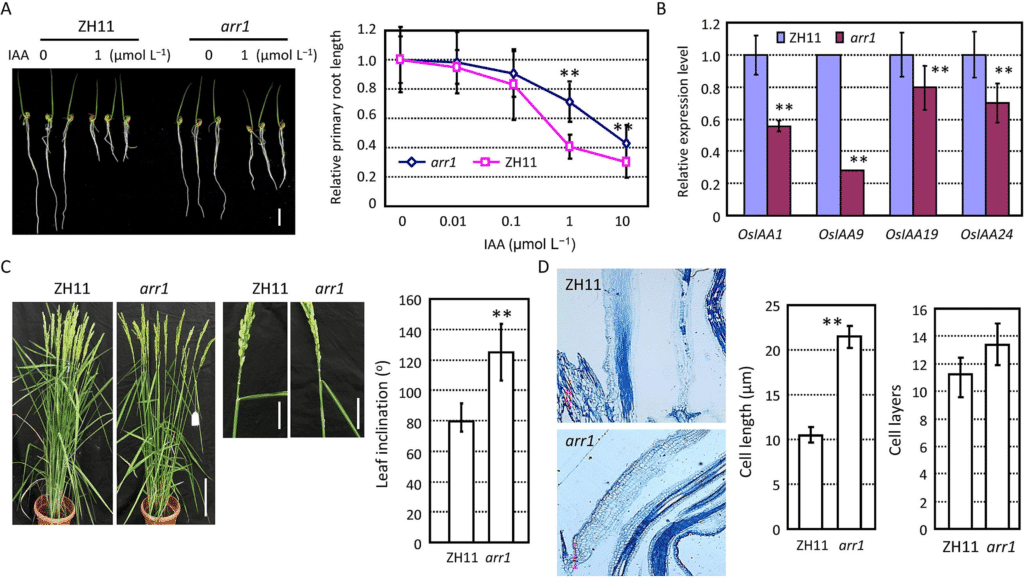Plants are a key source of nutrients for humans and animals alike, and with the human population quickly increasing, the demand for produce continues to grow. Limited agricultural, and shrinking, land means growers need new ways to increase food crop productivity.
“The world’s population is expected to increase by 2 billion persons in the next 30 years, from 7.7 billion currently to 9.7 billion in 2050 and could peak at nearly 11 billion around 2100,” according to the United Nations (UN).
This is where “crop architecture,” the design of the plant, comes in. Crop architecture can have an extensive influence on the production. Therefore, identifying the patterns and underlying biology could improve agricultural yields at large.
“Yield is determined by the plant’s capacity to capture light energy and utilize it to fix CO2 into complex organic compounds. It is now fully recognized that the much needed increases in crop yield to meet future global demands for food, feed, fiber, and fuel would have to come largely from manipulations of the photosynthetic capacity of plant species,” shared a study from Oxford Academic.
A Chinese study published in The Crop Journal has revealed more about the genetic basis of crop architecture through rice plants.
What is the Importance of Leaf Inclination?
Photosynthesis primarily occurs in the leaves, making the leaf inclination extremely important.
The leaf inclination, “determines the radiation transmission within vegetation canopies, relates to light distribution within a canopy, affects the photosynthetic productivity of the entire plant and helps to calculate the flux densities of radiation on leaf surfaces,” explained a study from Molecular Diversity Preservation International (MDPI).
In the Crop Journal study, researchers recognized which genetic factors control leaf inclination in Oryza sativa, a species of rice.
“The leaf inclination is an important trait determining the shape of the light-receiving part of the rice leaf. Identifying genetic variants with a leaf angle that favors ideal plant architecture can help in breeding rice varieties with higher productivity, improving the yield,” stated Professor Hongwei Xue, lead researcher on the study.
Plant hormones including “auxin” and “brassinosteroids” (BRs) have been proven to regulate leaf inclination. A series of BR deficient mutants display erect leaves, while decreased auxin levels result in increased leaf inclination, according to the study.
Researchers set out to learn more about the auxin-BR crosstalk.
The team started by screening rice from the Shanghai T-DNA Insertion Population. Through observing the growth of primary roots, researchers discovered an auxin-insensitive mutant, arr1. The mutant plants exhibited notably lower levels of auxin signaling genes including OsIAA1, OsIAA9, OsIAA19 and OsIAA24.
Researchers then compared the leaf inclination and the lamina joint of arr1 to wild type ZH11 plants. The mutants showed enlarged leaf angles compared to the wild type.

The Results
To identify the cellular alteration of the mutants, longitudinal sections were created. These sections showed the cells closer to the stalk, adaxial cells, were twice as long as the cells at the leaf joint of the wild type plants.
Genetic analysis showed an enlarged leaf angle in the arr1mutant due to an increased expression of the OsIAA6 gene through T-DNA insertion. High expression patterns of OsIAA6 found in the lamina joints was further proof of its role in dictating the leaf angle, according to the study. Further research revealed that OsIAA6 interacts with OsARF1 to regulate leaf inclination and suppress auxin signaling.
“These results indicate the roles of the OsIAA6,OsARF1 module in regulating rice leaf inclination and suggest the synergistic effects of the phytohormones auxin and BR,” said the study.
Researchers also discovered that OsBZR1, an essential transcription component in the BR signaling pathway, binds to the OsIAA6 promoter. This interaction displays the part OsIAA6 plays in the auxin-BR crosstalk.
The study’s findings have the potential to create opportunities for new rice varieties with greater photosynthetic efficiency.
“Better plants can lead to a better life. The results in our study could contribute to a better understanding of plant growth and help design the ideal crops,” concluded Xue.
Read More About New Research on Increasing Crop Yields:
Patented “Molecular Heaters” to Increase Crop Yield
Experts Apply Microbiome Research to Agricultural Science to Increase Crop Yield
Nebraska Study Finds Climate, Field Management Hold Keys to Increased Crop Yields
InterGrain and Inari Launch Collaboration to Deliver Step-Change in Wheat Yield Potential













